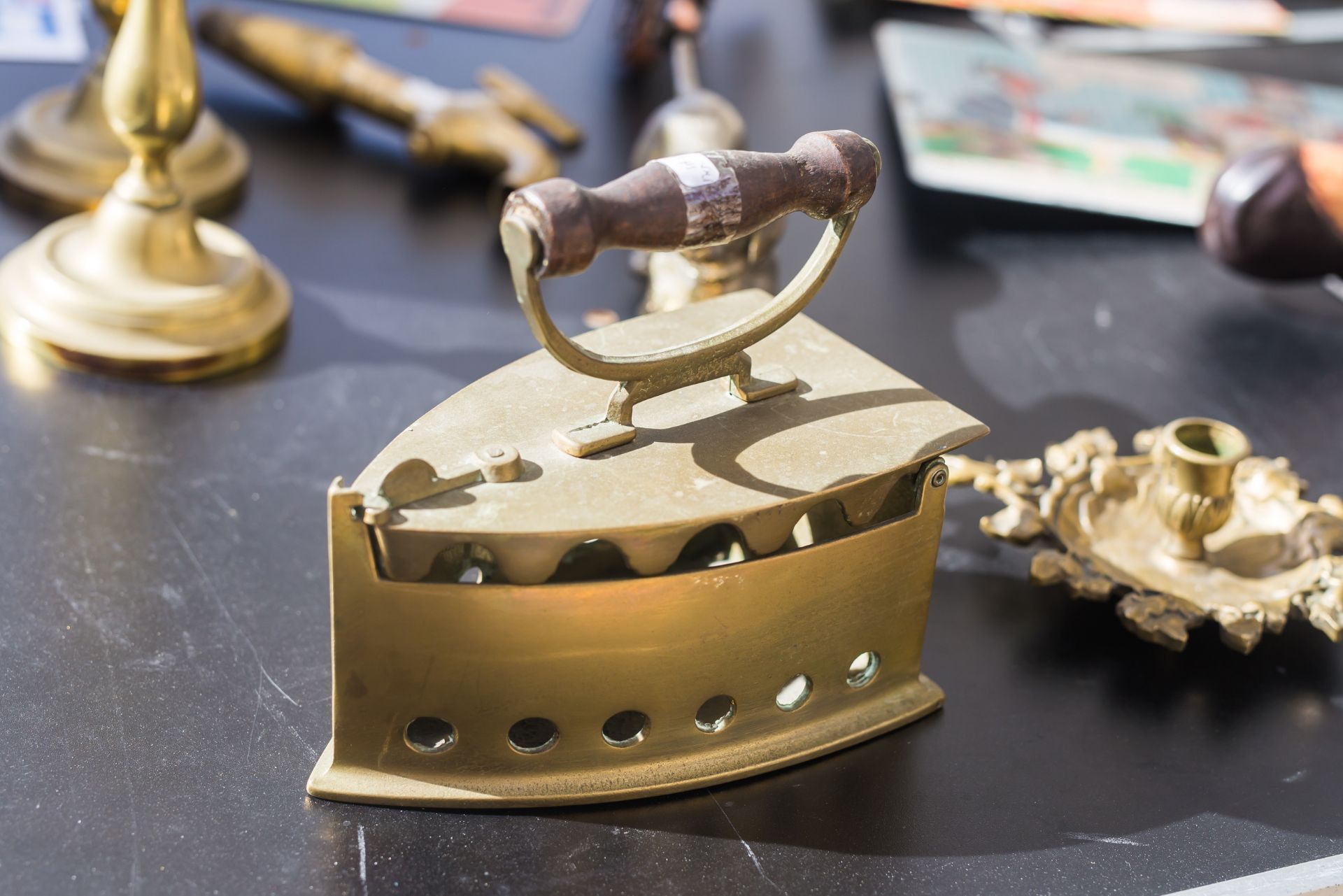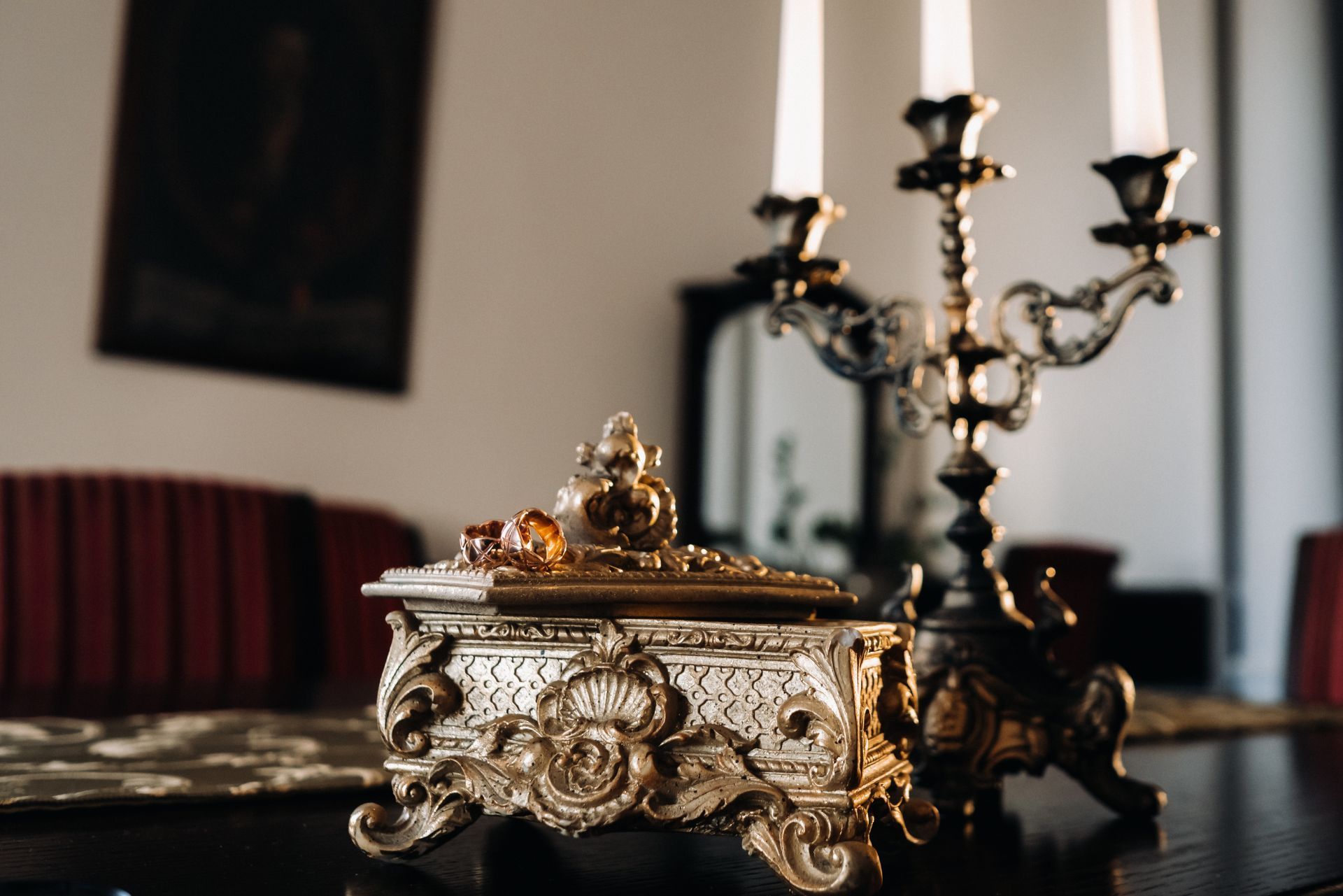Top 3 Recommended Policies

By: David Graves
Licensed Personal Insurance Specialist
425-320-4280
Collectible comic books tucked away in a Bellevue basement, a vintage Rolex inherited from a Tacoma grandfather, or a diamond engagement ring that sparkled during a Whidbey Island sunrise—all share one trait: they are worth far more than their owners’ standard homeowners policies will ever pay out. Valuable possessions insurance steps in where ordinary coverage runs thin, safeguarding high-value items from theft, fire, accidental damage, and Washington’s unique environmental risks. This guide breaks down how the coverage works, what it costs, how to choose a carrier, and why every Evergreen State resident with prized belongings should at least explore a dedicated policy.
Why Valuable Possessions Insurance Matters in Washington
Theft ranks among the top property crimes across Western Washington, with Seattle Police Department data showing more than 9,000 reported residential burglaries in the city limits during the most recent calendar year. Many of those losses involve jewelry, electronics, rare sneakers, or instruments that exceed the $1,500 to $2,500 “sub-limit” hidden in standard homeowners policies. Even east of the Cascades, where rural counties traditionally see lower crime rates, wildfire seasons have lengthened dramatically; the Washington State Department of Natural Resources recorded an average of 812 wildfires annually over the past five years. Valuable possessions insurance addresses both realities—urban theft and growing natural-hazard exposure—by offering higher limits, worldwide protection, and fewer exclusions.
Washington’s cost of living also influences replacement values. A watch appraised at $12,000 in 2015 may fetch well over $17,000 today based on luxury-goods inflation. Without scheduled coverage, that appreciation goes unrecognized, leaving owners to absorb thousands in depreciation or out-of-pocket replacement costs. By itemizing and updating appraisals, a valuables policy ensures reimbursement at current market rates rather than depreciated estimates.
Moreover, the unique cultural landscape of Washington contributes to the significance of valuable possessions insurance. The state is home to a vibrant arts scene, with numerous galleries and festivals celebrating local artists. Collectors of fine art, for instance, may find that their investments appreciate significantly over time, making it crucial to have adequate coverage that reflects the true value of their collections. Additionally, many Washington residents are passionate about outdoor activities, leading to the acquisition of high-end gear and equipment. From mountain bikes to kayaks, these items can be costly and are often at risk of theft or damage, highlighting the importance of having insurance that specifically covers valuable possessions.
Furthermore, as technology continues to advance, the value of electronics and gadgets has skyrocketed. Items like the latest smartphones, laptops, and gaming consoles can quickly become expensive assets that are susceptible to theft or accidental damage. For Washington residents who rely on these devices for both work and leisure, having a policy that covers such items can provide peace of mind. This is especially true in urban areas where theft rates are higher, as well as in rural regions where natural disasters can lead to unexpected losses. By investing in valuable possessions insurance, residents can protect their cherished items against a variety of risks, ensuring that they are safeguarded no matter where they are located in the state.

What Qualifies as a “Valuable Possession”?
Insurers operating in Washington typically define valuable possessions as items whose individual value surpasses the special-limits clause in a homeowners or renters policy. Common categories include fine jewelry, luxury watches, engagement rings, loose stones, precious-metal bullion, fine art, rare books and manuscripts, antique furniture, wine collections, high-end musical instruments, competition bicycles, and even classic sneaker collections. In recent years, insurers have broadened guidelines to account for emerging markets such as high-end gaming computers, designer handbags, and graded trading cards, acknowledging growth in alternative investments.
The definition can vary by carrier. Some companies focus on easily appraisable, non-functional items—like artwork—while others embrace technology and memorabilia. Before shopping for a policy, Washington residents should inventory belongings and flag anything that would hurt financially to repair or replace out of pocket. A quick scan of auction sites, local jewelers, and boutique galleries helps gauge whether an item is irreplaceable or unusually expensive for its category.
Moreover, it’s important to consider the sentimental value of certain possessions, which may not always translate into monetary worth but can be invaluable to the owner. Family heirlooms, for instance, often carry stories and memories that make them priceless, despite their market value. Items such as vintage photographs, handcrafted furniture passed down through generations, or even a beloved pet can hold significant emotional weight that should be factored into any insurance discussion. Understanding this distinction can help individuals make more informed decisions when determining which items to insure and how to approach their coverage needs.
Additionally, the rise of digital assets has introduced a new layer of complexity to the concept of valuable possessions. Digital art, cryptocurrencies, and even virtual real estate in online platforms are becoming increasingly recognized as valuable. As these assets gain traction, insurers are beginning to explore ways to incorporate them into traditional coverage models. This evolution highlights the necessity for policyholders to stay informed about the changing landscape of valuable possessions, ensuring that their insurance adequately reflects the full spectrum of their assets, both tangible and intangible.
The Washington Insurance Landscape
Washington’s Office of the Insurance Commissioner (OIC) regulates property-casualty insurers and enforces consumer protections, including mandatory disclosure of policy limits and the right to appeal claim denials. Almost every major national insurer—State Farm, Allstate, USAA, Chubb, Travelers—offers some form of valuables coverage in the state, alongside regional outfits like Mutual of Enumclaw and PEMCO. Competition keeps prices relatively moderate compared with coastal states such as California, yet geographical nuances—think flood-prone coastal zones or wildfire-exposed foothills—lead to underwriting variations within the state.
High-net-worth carriers headquartered outside Washington often partner with local independent agents in Seattle, Spokane, and Vancouver. These agents leverage niche expertise—such as insuring fine art for patrons of Tacoma Art Museum—to craft tailored riders. Meanwhile, tech-forward startups based in Seattle’s South Lake Union district are experimenting with app-centric scheduling, allowing users to photograph and upload receipts in real time, streamlining documentation at claim time.
Three main arrangements dominate the Washington market: endorsements tacked onto homeowners/renters policies, standalone valuables contracts, and hybrid approaches that combine both. Understanding the nuances helps consumers choose appropriate protection.
Scheduled Personal Property Endorsements
An endorsement, sometimes called a “rider,” adds specific items to an existing homeowners or renters policy. Each object—say, a Yakima Valley wine collection valued at $20,000—appears on a schedule with its insured limit. Endorsements generally waive the standard deductible for scheduled items and reimburse on an agreed-value basis, sparing policyholders from depreciation surprises.
Standalone Valuable Items Policies
Collectors with dispersed storage locations or seasonal residences often prefer an independent valuables policy. These contracts cover items anywhere in the world, often include broader peril lists (including accidental breakage), and remain in force even if the underlying homeowners policy lapses. They also allow for higher aggregate limits; some carriers insure $100 million art collections housed across Seattle penthouses, Bainbridge Island retreats, and New York galleries under a single policy.
Blanket Coverage vs. Itemized Coverage
Blanket coverage sets one pooled limit for a category—perhaps $50,000 for jewelry—without listing each piece. It simplifies record-keeping but risks underinsuring individual high-value items. Itemized coverage assigns separate limits and requires appraisals, offering certainty at claim time. Owners of multiple mid-range watches might choose a blanket, while a single six-figure vintage Patek Philippe merits itemization.
Assessing the Worth of Your Belongings
Accurate valuation underpins every part of a valuables policy. Jewelry appraisals should be no older than three years, according to most Washington underwriters, because metal markets and designer premiums fluctuate rapidly. Certified Gemologists in Seattle’s Jewelers’ Row or Spokane’s diamond district provide graded reports, photographs, and replacement-value estimates. For fine art, carriers usually require documentation from an appraiser listed with the International Society of Appraisers or the American Society of Appraisers, both of which have active Pacific Northwest chapters.
Digital assets—such as high-end laptops used for professional graphic design—should include purchase receipts and serial numbers. Luxury handbag owners can rely on authentication from reputable resellers with physical storefronts in Bellevue Square or Capitol Hill to bolster provenance. Keeping electronic and hard-copy records in separate locations, such as a secure cloud backup and a safety-deposit box, expedites claims should a total loss occur.
Common Risks Specific to Washington State
While theft and fire remain universal concerns, Washington presents distinctive perils. The Cascadia Subduction Zone poses a moderate to high earthquake risk, especially for those who keep art in downtown Seattle high-rises or fragile wine cellars in Woodinville. Although earthquake coverage for valuables often requires a separate rider, discussing the threat with an agent prevents costly oversights.
Coastal flooding, fueled by king tides and intensified storms, imperils communities from Bellingham to Long Beach Peninsula. Meanwhile, interior counties endure smoke damage from summer wildfires—residue that can permanently mar paintings and tarnish precious metals. Owners storing items in detached outbuildings or vacation cabins must verify “off-premises” provisions, because base homeowners policies limit such protection to 10 percent of dwelling coverage or less.
Cost Factors and Premium Expectations
Premiums for valuables insurance in Washington hinge on item type, appraised value, security measures, deductible choice, and geographic loss data. A $15,000 engagement ring housed in a Seattle condo with a 24-hour doorman can cost as little as $120 a year to insure at zero deductible. Move that same ring to an unfenced, ground-floor apartment in Spokane Valley, and the premium might climb to $180 due to higher burglary frequency recorded by regional crime statistics.
Fine art typically commands lower rates than jewelry because theft requires more planning and specific buyers. Carriers often start around $0.40 per $100 of art value versus $1.00–$1.50 per $100 for loose diamonds. Installing a monitored alarm, a bolted safe, or climate-controlled storage can earn credits of 5–15 percent. Bundling the valuables policy with homeowners and auto may unlock multi-policy discounts, softening the impact on the overall insurance budget.

How to Choose the Right Carrier
Washingtonians should prioritize financial strength—look for A- or better ratings from A.M. Best—because high-value claims demand carriers with strong reserves. Specialty experience matters as well: insurers with dedicated fine-art adjusters or jewelry experts accelerate claim resolutions and provide accurate post-loss valuations.
Responsive customer support is crucial during stressful situations. Checking the Washington OIC’s consumer complaint index reveals how carriers handle disputes locally. Finally, reading sample policy language—or having an attorney do so—uncovers exclusions that might affect niche collections such as rare fossils, vintage firearms, or crypto-hardware wallets.
Steps to Insure Your Valuable Possessions
1. Inventory all high-value items with photos, serial numbers, receipts, and appraisals.
2. Contact at least two licensed Washington agents to compare rider versus standalone options.
3. Submit appraisal documents and complete security questionnaires; some carriers send loss-control specialists to inspect safes or alarm systems.
4. Review quotes for coverage limits, deductibles, and worldwide protections.
5. Bind coverage, verify effective dates, and store electronic copies of policies in a secure cloud location.
After binding, diarize renewal dates and schedule reappraisals every two to three years. Should a significant market uptick occur—like the 30 percent surge in luxury watch values between 2020 and 2022—mid-term adjustments ensure the policy remains adequate.
Claims Process: What to Expect
When loss strikes, immediate notification is paramount. Most carriers require notice within 30 days or “as soon as reasonably possible.” Provide a police report for theft, fire department report for fire, or repair estimate for accidental damage. Digital photos and original appraisals speed verification, allowing adjusters to authorize replacement or reimbursement, often within two weeks for straightforward jewelry claims.
For fine art, carriers may send conservators or restoration experts before approving a payout, prioritizing preservation over replacement. If repair is impossible, the policy’s agreed value triggers payment minus any applicable deductible. Disagreements over valuation can go to appraisal or arbitration, mechanisms spelled out in Washington-approved policy forms.
Loss Prevention and Security Best Practices
Insurers reward proactive owners. Installing UL-rated safes, doorbell cameras tied to smartphone alerts, and monitored motion sensors yields premium credits and reduces the chances of a claim. Washington’s colder climate invites condensation, so climate-controlled storage—ideally 50–55 percent humidity and 68-72°F—prevents mold on canvases and warping of wooden instruments.
Traveling with valuables demands caution. Jewelry worn during Pacific Northwest hikes can sustain damage from sudden rain or abrasive rock surfaces; carrying microfiber pouches and silica gel packets helps preserve shine. When shipping wine to competitions or auctions, always opt for overnight service with cold-chain packaging to combat heat spikes common in Eastern Washington summers.
Legal Considerations and Regulatory Updates
Effective January 1, 2024, Washington adopted revisions to WAC 284-20, mandating clearer disclosure of sub-limits in homeowners policies. This change empowers consumers to recognize gaps and seek riders. Additionally, the Uniform Electronic Transactions Act facilitates e-signatures on appraisals, streamlining policy binding without mailing physical copies.
Collectors moving items across state lines should note Washington’s sales-and-use tax rules. Purchasing an antique in Oregon and transporting it back can trigger “use tax,” affecting declared replacement values. Consulting a tax advisor ensures compliance and prevents issues at claim time, when insurers may request import receipts to verify provenance.
Frequently Asked Questions
Does renters insurance in Washington cover my engagement ring?
Basic renters policies generally cap jewelry coverage at $1,500 or $2,500 for theft and may exclude mysterious disappearance. Scheduling the ring under a personal-property endorsement or standalone policy ensures full replacement at current market value without affecting other renters limits.
Will my valuables be covered during international travel?
Most standalone valuables policies and many endorsements extend worldwide protection, including transit. Always confirm “territory” definitions in the declarations; some policies exclude sanctioned countries or require pre-trip notification for items exceeding specific thresholds.
How often should appraisals be updated?
Every two to three years is the industry norm, yet items made of volatile commodities—like gold or platinum—benefit from annual reviews. If the market price climbs more than 20 percent since the last appraisal, mid-term updates ensure the insured value keeps pace.
Final Thoughts
Washington’s ever-changing landscape—economic, environmental, and cultural—demands tailored protection for beloved belongings. Valuable possessions insurance fills the void left by standard policies, offering peace of mind whether safeguarding heirloom jewelry, emerging digital collectibles, or curated art. A thoughtful combination of accurate appraisals, robust coverage, and proactive security keeps what matters most secure, allowing owners to focus on enjoying their treasures rather than worrying about their fate.

